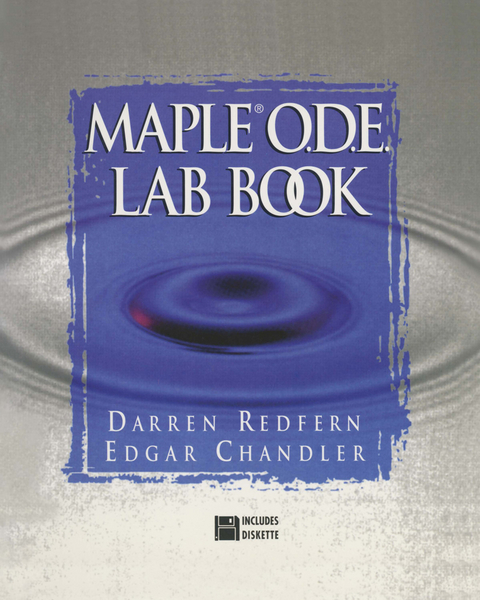
The Maple® O.D.E. Lab Book
Springer-Verlag New York Inc.
978-0-387-94733-4 (ISBN)
1. Introduction.- How This Lab Book Is Organized.- Using the Diskette.- Where to Go for More Information.- Acknowledgments.- 2. Getting Started with Maple.- Starting Maple.- Basic Maple Syntax.- Basic Maple Objects.- Mixing and Matching Different Number Types.- Strings.- Maple Expressions.- Sets and Lists.- Calling Maple Commands.- Assignments and Equations.- The Use of Quotes in Maple.- Activities for §2.- 3. First-Order ODEs.- Defining and Solving First-Order ODEs.- Explicit vs. Implicit Solutions.- Activities for §3.- 4. Applications of First-Order ODEs.- Falling, Floating, or Accelerating Objects.- Mixture Problems.- Activities for §4.- 5. Graphical Methods.- Direction Fields.- Some Examples.- Activities for §5.- 6. Homogeneous Linear Differential Equations.- Activities for §6.- 7. Non-homogeneous Linear Differential Equations.- Activities for §7.- 8. Applications of Linear Differential Equations.- Free, Undamped Motion.- Free, Damped Motion.- Activities for §8.- 9. More Applications and Systems of Differential Equations.- Forced Motion.- Systems of Linear Differential Equations.- Activities for §9.- 10. Phase Planes.- Activities for §10.- 11. Matrix Operations.- Basic Concepts.- Characteristic Values and Characteristic Vectors.- Activities for §11.- 12. Matrix Methods of Solution.- Activities for §12.- 13. Isoclines.- Activities for §13.- 14. Series Solutions.- Activities for §14.- 15. Numerical Methods.- Problems with Numerical Methods.- Activities for §15.- 16. The Laplace Transform.- Activities for §16.
| Zusatzinfo | X, 160 p. With Diskette. |
|---|---|
| Verlagsort | New York, NY |
| Sprache | englisch |
| Maße | 203 x 254 mm |
| Themenwelt | Informatik ► Office Programme ► Outlook |
| Mathematik / Informatik ► Mathematik ► Analysis | |
| ISBN-10 | 0-387-94733-7 / 0387947337 |
| ISBN-13 | 978-0-387-94733-4 / 9780387947334 |
| Zustand | Neuware |
| Haben Sie eine Frage zum Produkt? |